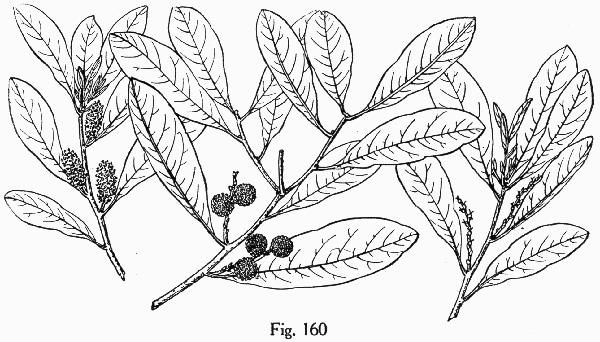Spermatophytes (seed plants): Angiosperms (flowering plants): Eudicots: Core Eudicots: Rosids: Fabids: Fagales
WEAKLEY'S FLORA OF THE SOUTHEASTERN US (4/24/22):
Morella inodora
FAMILY
Myricaceae
Go to FSUS key
Dig deeper at SERNEC, a consortium of southeastern herbaria.
SYNONYMOUS WITH
PLANTS NATIONAL DATABASE:
Morella inodora
FAMILY
Myricaceae
SYNONYMOUS WITH Floristic Synthesis of North America. BONAP (Kartesz, 2021)
Morella inodora
SYNONYMOUS WITH Flora of North America
Myrica inodora
SYNONYMOUS WITH Manual of the Southeastern Flora (Small, 1933, 1938)
Cerothamnus inodorus
COMMON NAME:
Scentless Bayberry, Odorless Bayberry
To see larger pictures, click or hover over the thumbnails.
WEAKLEY'S FLORA OF THE SOUTHEASTERN US (4/24/22):
Morella inodora
FAMILY
Myricaceae
SYNONYMOUS WITH
PLANTS NATIONAL DATABASE:
Morella inodora
FAMILY
Myricaceae
SYNONYMOUS WITH
Floristic Synthesis of North America. BONAP (Kartesz, 2021)
Morella inodora
SYNONYMOUS WITH
Flora of North America
Myrica inodora
SYNONYMOUS WITH
Manual of the Southeastern Flora (Small, 1933, 1938)
Cerothamnus inodorus
If a search such as "Carex leptalea var. leptalea" doesn't deliver the results you want, try "Carex leptalea".
Or, to minimize chances of a misspelling, try just "Carex le".
Less is more: If "pencil flower" doesn't deliver the results you want, try "pencil".



